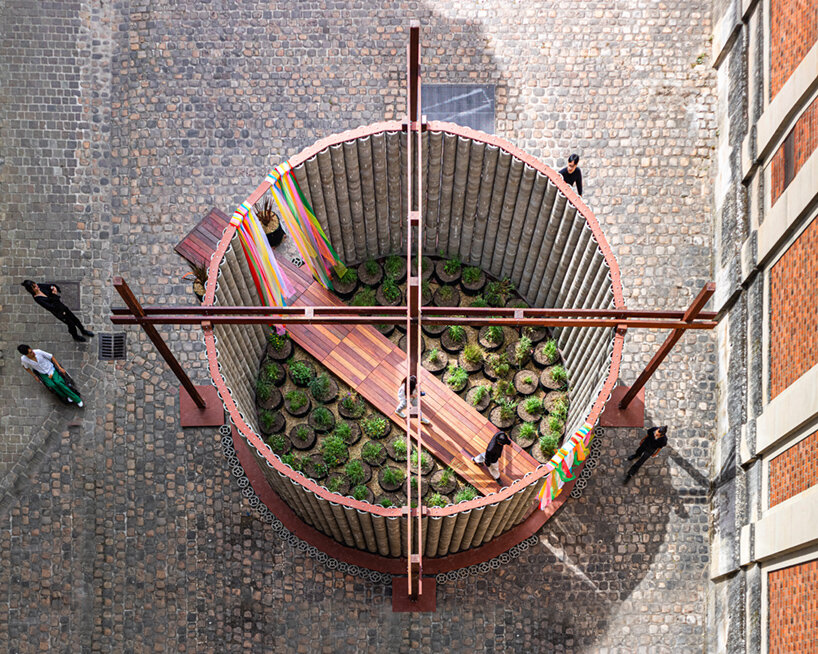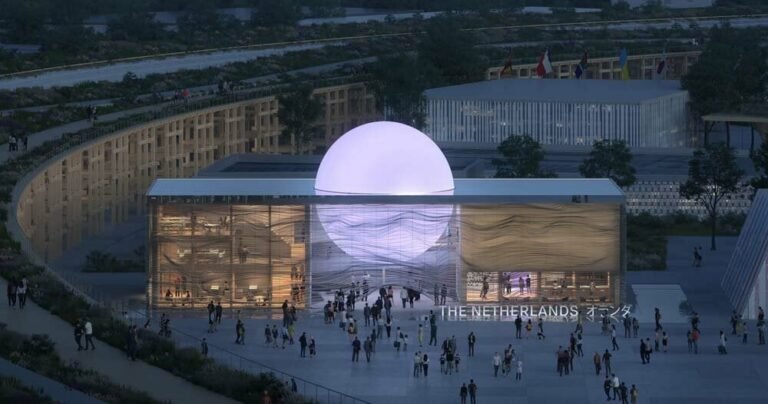boonserm premthada builds his ‘elephant theater’ of bricks made from animal waste
from material study to built space
Bangkok Project Studio founder Boonserm Premthada presents the Elephant Theater, an architectural application of his World Elephant Project which investigated the upcycling of animal waste into building material (see designboom’s coverage here). Following the project’s completion in 2020, the designer took to Thailand’s Ta Klang Village, a place known for its domesticated elephants — and thus, its abundance of dung along the roads.
Boonserm Premthada — winner of THE DESIGN PRIZE 2021 for social impact — notes that because the herbivorous animals feed mainly on Napier grass, their droppings are fibrous and therefore ideal for use in brickmaking.
 images © Spaceshift Studio | @spaceshiftstudio
images © Spaceshift Studio | @spaceshiftstudio
Dung from thailand becomes architecture in france
Bangkok Project Studio’s Boonserm Premthada (see more here) builds the Elephant Theater pavilion as part of the Biennale Architecture and Landscape of Versailles 2022 (see more here). The bricks were created from dung sourced from Ta Klang Village, Surin, Thailand, and transported to France to create the structure.
A single brick measures 255 millimeters in diameter and has a thickness of 50 millimeters and a vertical gap for steel reinforcement. Once stacked, the round bricks create large, circular columns which are arrayed to form an enclosure. Inside the pavilion is a secret garden, open to the sky sunlight, and breezes. Surrounding a walking path are a cluster of planting pots which remind visitors of the dung’s other primary use as a natural plant fertilizer.

How Boonserm Premthada upsycles waste into brick
Elephants living in the Thai village are fed locally-grown napier grass, which Boonserm Premthada claims to contain a large amount of plant fiber, a perfect construction material. He notes that their droppings take shape as round balls with a diameter of 180 millimeters, and dark green color which eventually becomes brownish green after exposure to the air.
Each elephant dung brick is handcrafted one by one. After shaped in a mold, the bricks are air dried, to avoid the carbon dioxide-generating process of firing the bricks. They are then installed, disassembled, and transported. At the end of their life cycle, the bricks can naturally decompose and return to become part of the soil. The architect tells designboom: ‘The beautiful elephant dung bricks are a product of biodiversity, and this brick-making process can be applied anywhere in the world.’

the origins of the elephant theater
Boonserm Premthada describes the brick-making process in further detail: ‘After we receive the elephant dung from the villagers, we dry it, then put it in a large blender to cut up the fibers, and mix it with cement, sand and little water. Next, we put the elephant dung mixture into steel molds which are designed for easy disassembly.
‘The mixture is put in the mold layer by layer, making sure each layer is dense before continuing with the next layer until the mold is completely filled. After that, we remove the molds and dry the bricks in the sun for seven days. During this time, we cure the bricks by watering them.
‘Then, we dry the bricks under the shade for seven more days until they are sturdy and strong. The final step is to put the bricks to the test for weight support capacity and strength.’

the bricks can serve as a small beginning for humans to reconsider the role architecture plays in healing the world

once stacked, the round bricks create large, circular columns which are arrayed to form an enclosure

